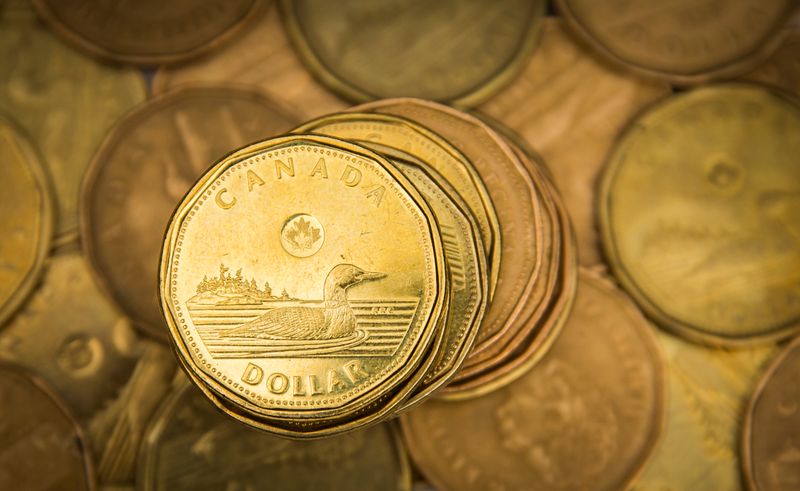TORONTO (Reuters) - The Canadian dollar weakened to a five-week low against its U.S. counterpart on Monday as rising coronavirus infections weighed on investor sentiment, while domestic data showed new house prices increasing at the fastest annual rate in more than two years.
Global shares <.WORLD> fell as renewed lockdown measures in some countries due to the spread of the virus cast doubt over economic recovery.
Canada runs a current account deficit and is a major producer of commodities, including oil, so the loonie tends to be sensitive to the global flow of trade and capital.
U.S. crude (CLc1) prices were down 2.4% at $40.12 a barrel, pressured by the possible return of Libyan production and as rising COVID-19 cases stoked worries about global demand.
The Canadian dollar
Canada has also seen a rise in coronavirus infections. On Saturday, Ontario, the country's most-populous province, cracked down on private social gatherings.
Still, speculators have cut their bearish bets on the Canadian dollar for the fourth straight week, data from the U.S. Commodity Futures Trading Commission showed on Friday. As of Sept. 15, net short positions had fallen to 16,943 contracts from 17,355 in the prior week.
Canadian new house prices rose 2.1% year-over-year in August, which was the largest increase since March 2018, Statistics Canada said.
Canadian government bond yields were lower across a flatter curve in sympathy with U.S. Treasuries on Monday. The 10-year (CA10YT=RR) fell 3.7 basis points to 0.544%.

Canadian Prime Minister Justin Trudeau is scheduled to unveil on Wednesday what he says is a bold far-reaching plan to help Canada recover from the coronavirus pandemic.